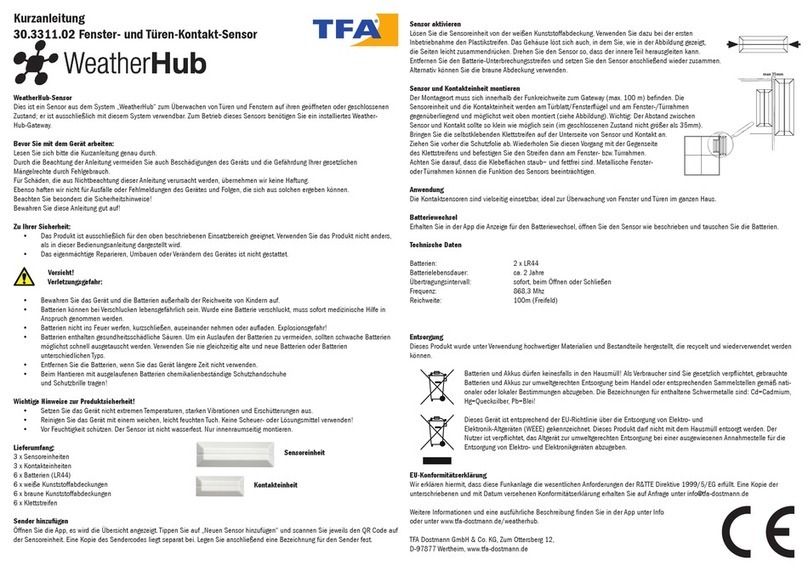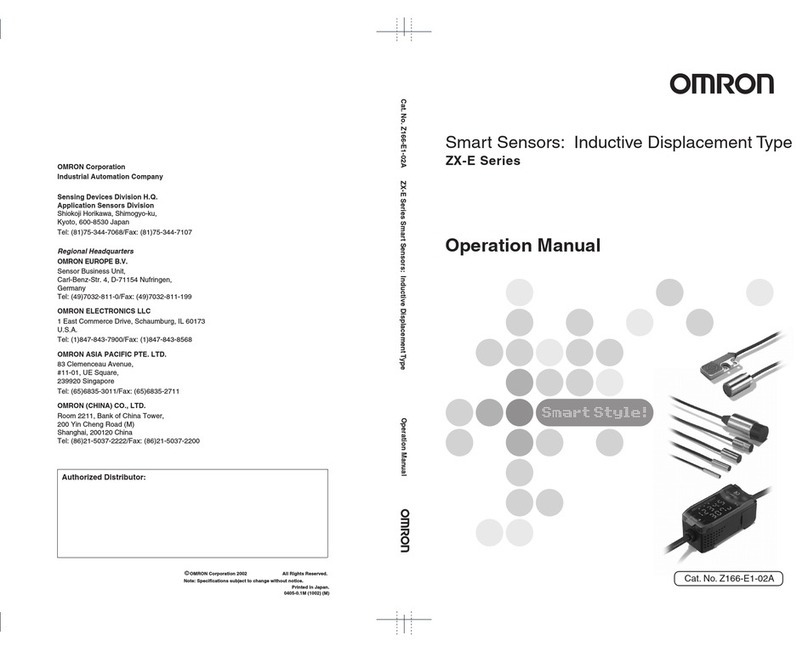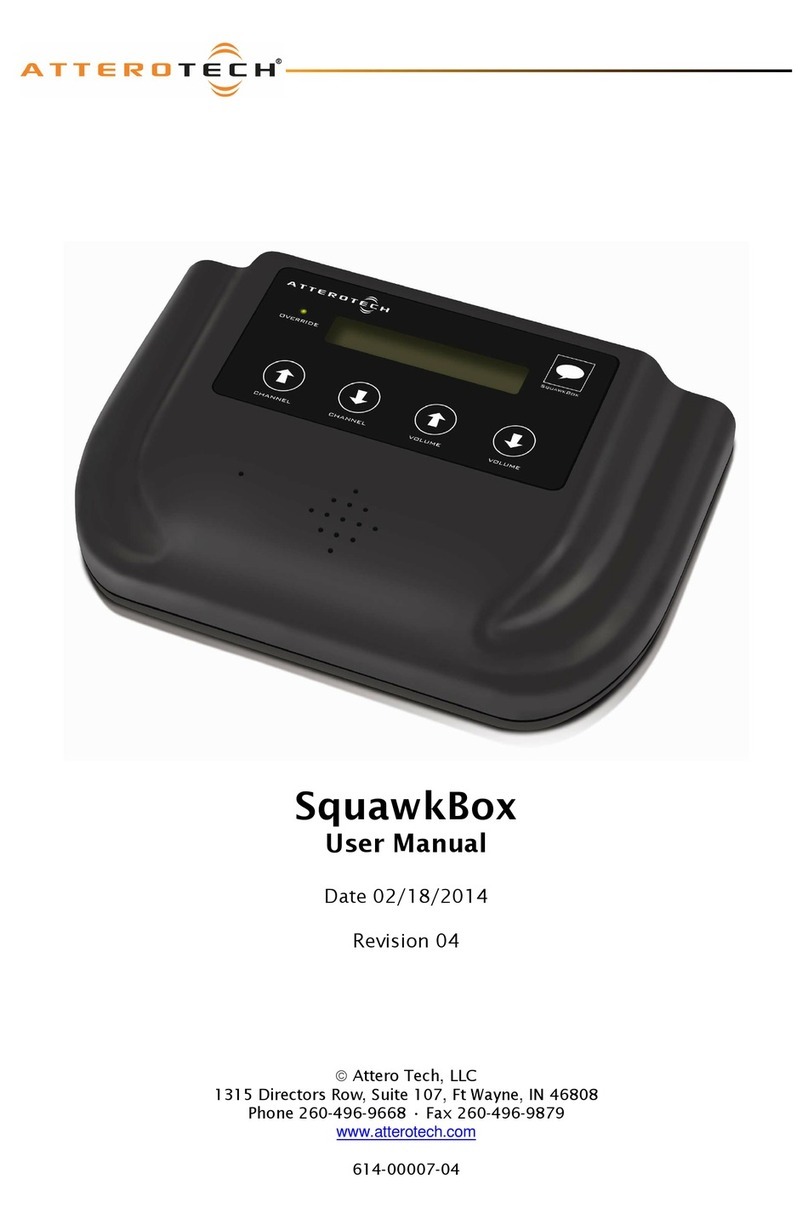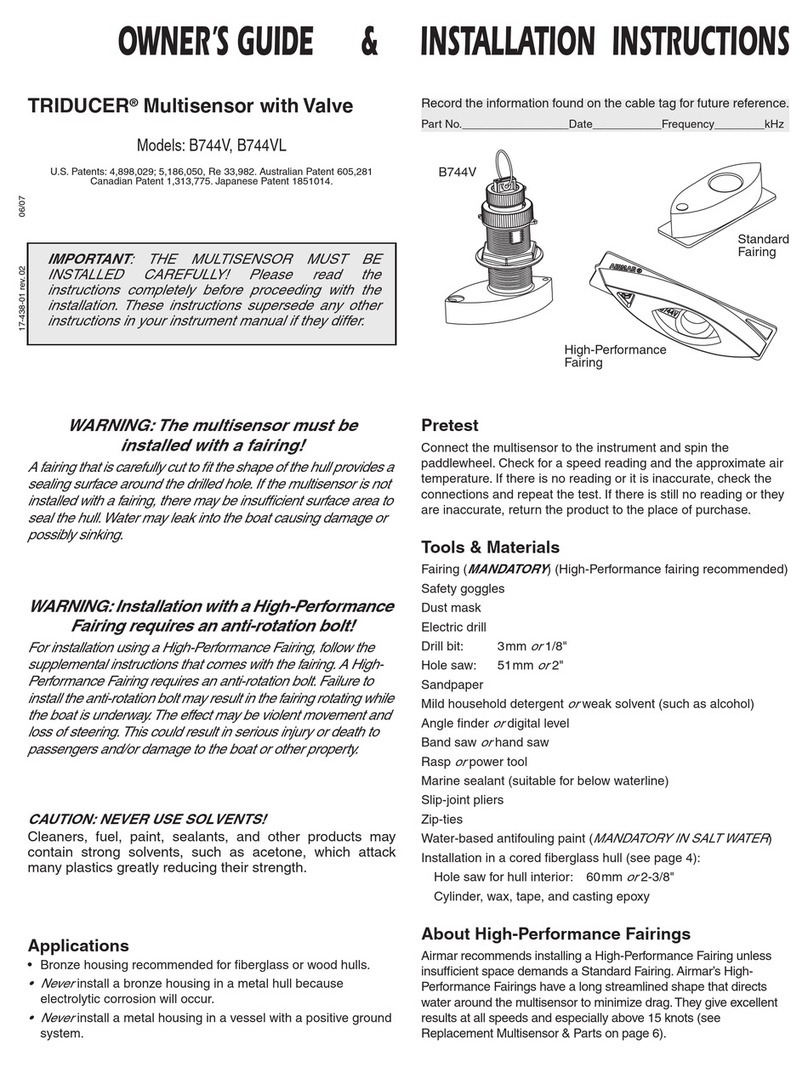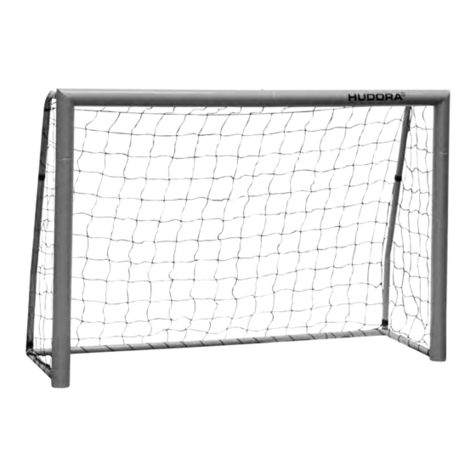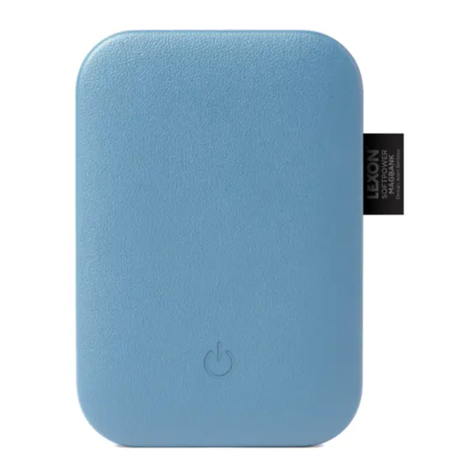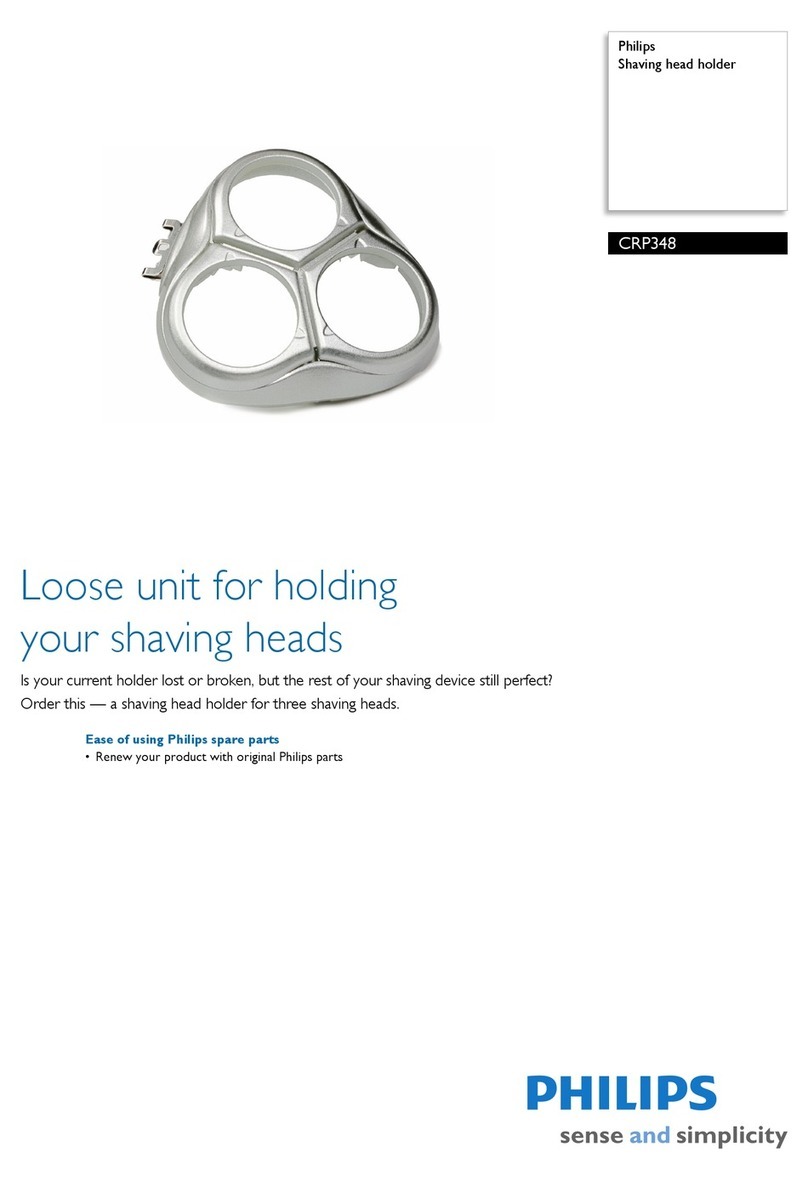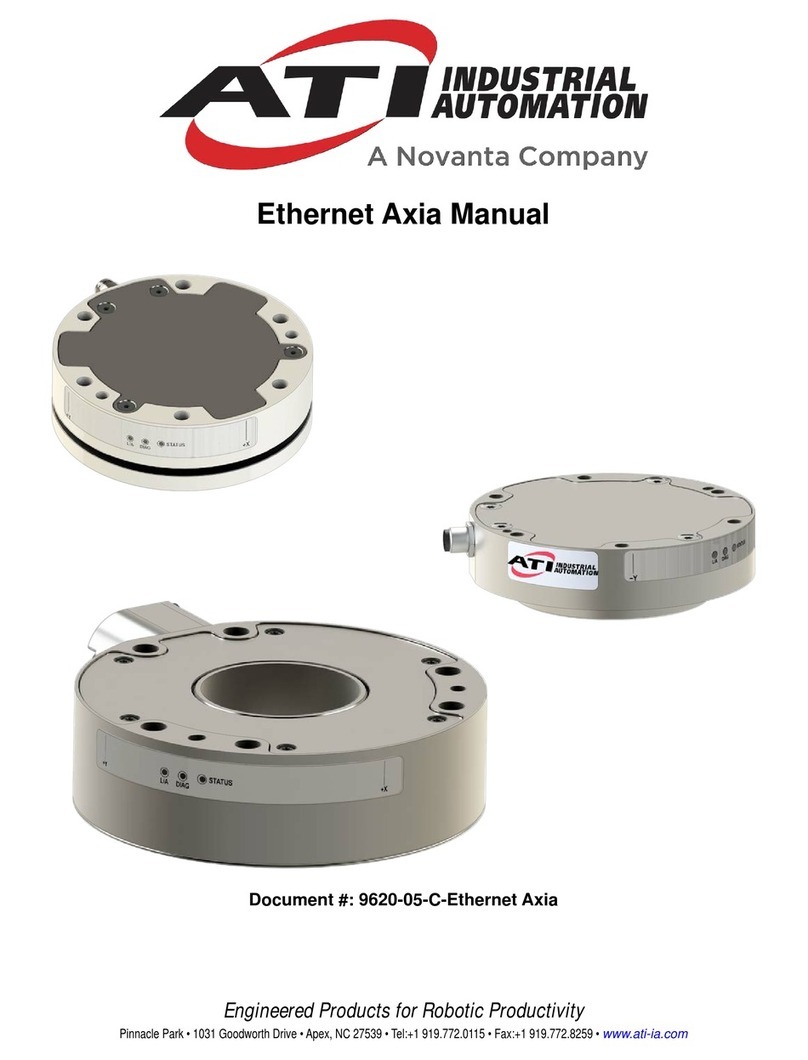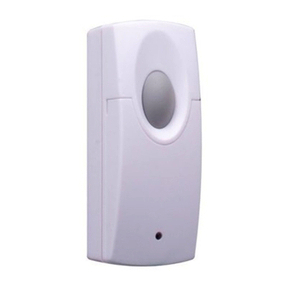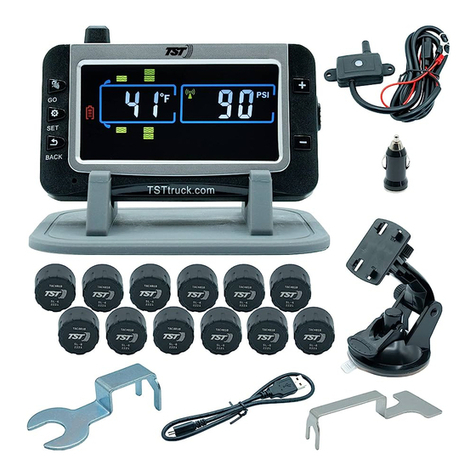Fire Sentry FS24X QuadBand Triple IR User manual

____________________________________________________________________________________________________________________
Fire Sentry Corporation Document No. 6178-001 - Rev. Q ©Copyright 2011 All Rights Reserved
Fire Sentry Corporation (FSC)
23311 La Palma Avenue Tel.: 714-671-1100
Yorba Linda, California 92887
Telephone: 714-694-2700
Fax: 714-694-2701
www.firesentry.com
FS24X QuadBand Triple IRTM
Multi-Spectrum Infrared Electro-Optical Multi-Spectral Digital WideBand IR
Sensor
Radiant Energy Fire and Flame Detector
FSXP
TMP
Fire and Flame Detectors
MODEL FS24XTM
Installation Guide
and
Operating Manual

Fire Sentry Corporation Document No. 6178-001 - Rev. Q ©Copyright 2011 All Rights Reserved
Fire Sentry Corporation (FSC)
23311 La Palma Avenue
Yorba Linda, California 92887
Tel: (714) 694-2700
Fax: (714) 694-2701
www.firesentry.com
Read and understand this manual before
installing or operating equipment.
No part of this document may be copied or reproduced without the express
written permission of Fire Sentry Corporation (FSC).
This manual is subject to change without notice.
ACCTTL, ALERT-1, ALARM-2, ALERT-1: ALARM 2, ALERT-1: ALARM-2, ATAG, Clean Room
Sentry, COP-i, Complete Optical Path Integrity, CM1, CM1-A, DartLogic, FireLogic, Fire Signature
Analysis, FireBusI, FireBusII, FirePic, FirePicII, FirePicIII, FirePix, FirePicture, FSC, Fire Sentry
Corporation, Fire Sentry Corp., FSX, All FSX Nomenclature Variations (such as: FS2, FS2X,
FS2X, FS3, FS3X, FS3X, FS4, FS4X, FS4X, FS5, FS5X, FS5X, FS6, FS6X, FS6X, FS7, FS7X,
FS7X, FS8, FS8X, FS8X, FS9, FS9X, FS9X, FS10X, FS10X, FS11, FS11X, FS11X, FS12,
FS12X, FS12X, FS14, FS14X, FS14X, FS15, FS15X, FS15X, FS16, FS16X, FS16X, FS17,
FS17X, FS17X, FS18, FS18X, FS18X, FS19, FS19X, FS19X, FS20, FS20X, FS20X, FS24,
FS24X, FS24X, FS24XN, FS24XN, FS26, FS26X, FS26X, FS26XN, FS26XN, FS7-2173-2RP, FS
System 7, FS System 10, FS7-2173, FS7-2173-RP, FS2000, FS System 2000, High Speed Flame
& Surveillance Detector, Multi-Spectrum QuadBand Triple IR, Multi-Spectrum TriBand, Multi-
Spectrum Tri-Band, Near Band Infrared, Near Band IR, NearBand IR, QuadBand IR, Room Sentry,
RS, RS2, SM2, SM3, SS, SS2, SS2X, SS2-A, SS3, SS3-A, SS3X, SS4, SS4-A, SS4X, SnapShot,
SLR-BIT, SuperBus, SuperSentry, System 2000, Tri-Mode Plot, QuadBand Triple IR Plus, TriBand,
Tri-Band, “FS & FSC triangle logo’s”, WBIR, Wide Band Infrared, WideBand IR, Wide Band IR
are Trademarks of Fire Sentry Corporation (FSC), Yorba Linda, California.
©Copyright 1998 - 2011 by Fire Sentry Corporation (FSC)

Model FS24X™Fire and Flame Detectors
INSTALLATION GUIDE and OPERATING MANUAL
Fire Sentry Corporation Document No. 6178-001 - Rev. Q © Copyright 2011 All Rights Reserved
UTABLE OF CONTENTSUUPAGE
TUSECTION 1: INTRODUCTION UT ...................................................................................................................................1
TU1.1UT TUProduct Overview UT ............................................................................................................................................ 1
TU1.2UT TUDetector Technical Specifications UT ...................................................................................................................2
TU1.2.1UT TUMechanical Specifications UT ................................................................................................................... 2
TU1.2.2 Electrical Specifications ........................................................................................................................ 2
U1.2.3UUEnvironmental Specifications U............................................................................................................... 2
U1.2.4UUPerformance Specifications U................................................................................................................. 3
1.2.5 Hazardous Area Classifications ............................................................................................................ 3
U1.3 Features & Benefits .......................................................................................................................................... 3
U1.4 Applications ...................................................................................................................................................... 4
USECTION 2: INSTALLATION U...................................................................................................................................... 5
U2.1 Mounting Instructions .......................................................................................................................................5
U2.2 Opening the Detector .......................................................................................................................................6
U2.3 Detector Connections ....................................................................................................................................... 7
U2.4 Installation Practices ........................................................................................................................................8
U2.5 Start-Up and Commissioning ..........................................................................................................................10
USECTION 3: OPERATION .........................................................................................................................................12U
U3.1 Principle of Operation ...................................................................................................................................... 12
U3.2 Configuring the Detector .................................................................................................................................12
U3.3 LED Status Indicators ..................................................................................................................................... 14
3.4 Normal Operation ............................................................................................................................................ 14
U3.5 Alarm Condition ...............................................................................................................................................14
U3.6 Fault Conditions .............................................................................................................................................. 15
U
U3.7 Maintenance .................................................................................................................................................... 15
USECTION 4: APPENDIX ............................................................................................................................................16U
U4.1 Warranty Information ....................................................................................................................................... 16
U4.2 Product Variations ........................................................................................................................................... 17
U4.3 Digital Communication Options .......................................................................................................................17
U4.4 Test Lamps ......................................................................................................................................................18
U4.5 Field of View Restrictor ...................................................................................................................................16
4.6 Additional Performance Specifications ........................................................................................................... 17
4.6.1 Flame Response Sensitivity ................................................................................................................17
4.6.2 High Temperature Response ............................................................................................................... 17
4.6.3 False Alarm Immunity ..........................................................................................................................18
4.7 Drawings ......................................................................................................................................................... 19
4.7.1 Outline and Dimensions ....................................................................................................................... 19
4.7.2 Wiring and Terminal Connections ........................................................................................................20
4.7.3 Detector Label Drawings ...................................................................................................................... 22
UINDEX..........................................................................................................................................................................23U

Model FS24X™Fire and Flame Detectors
INSTALLATION GUIDE and OPERATING MANUAL
Fire Sentry Corporation Document No. 6178-001 - Rev. Q © Copyright 2011 All Rights Reserved
Page 1
SECTION 1: INTRODUCTION
1.1 Product Overview
The Model FS24X™Detectors sense the WideBand IR™
radiant energy of blackbody particulate and molecular
emissions generated by both hydrocarbon and non-
hydrocarbon flames and fires. The WideBand IR spectral
radiant energy wavelengths sensed by the Quad (4) sensors
span from approximately 0.4 to 7.0 microns for the FS24X.
The Model FS24X Multi-Spectrum Fire and Flame Detectors
are designed and Factory Mutual approved for use in Class
I, Div. 1 and 2, Class II and Class III Hazardous Locations
and ATEX Certified Ex d IIC (T4 –T6) Flameproof (Figure 1-
1 & Figure 1-2).
The FS24X Detectors are available in copper-free Aluminum
or 316 Stainless Steel enclosure. The FS24X Detector
electro-optical electronics module (puck) is enclosed in a
field-replaceable black, hard anodized aluminum puck that
provides superior ruggedness, handling, ease of installation,
and protection against EMI/RFI.
Figure 1-1
FS24X Detector (110° Field of View)
Shown with 316 Stainless Steel Housing
FS24X Detector Field Connectors
The field connections feature two (2) connector choices for
the installer:
1. A removable ten (10) pin screw terminal connector
(J2) for hard-wired relay applications.
2. A removable six (6) pin screw terminal connector (J1)
for analog output or RS-485 Digital Communication
applications.
3. An optional video connector, RCA type (J3) is used
when the FS24X Detector is ordered with the built-in
video camera option. (Not Available for FS24X-9™).
The removable connectors provide quicker installation and
allows the Detector enclosure to be installed prior to the
Detector Module (puck).
Figure 1-2
FS24X-9 Detector (90° Field of View)
Shown with Copper Free Aluminum Housing

Model FS24X™Fire and Flame Detectors
INSTALLATION GUIDE and OPERATING MANUAL
Fire Sentry Corporation Document No. 6178-001 - Rev. Q © Copyright 2011 All Rights Reserved
Page 2
UField Selectable Configuration Switches
1. The eight (8) pin DIP switch (SW2) is used
to select the Detector’s Sensitivity and
Relay Options.
2. The ten (10) pin DIP switch (SW1) is used
for:
Selecting a unique digital address
(128 choices).
Factory Use
3. The ten (10) position Rotary switch allows
selection of the analog and digital
communication protocol.
Figure 1-3
FS24X and FS24X-9 Detector Puck, (rear view)
1.2 Detector Technical Specifications
1.2.1 Mechanical Specifications
Enclosure Material: Copper Free Aluminum
316 Stainless Steel
Physical Dimensions: Assembly 4.35 in. (110.49 mm) Height X 4.81 in. (122.24 mm) Diameter
Mounting Holes ¼ in. (6.35 mm) Diameter, 5.50 in. (139.70 mm)Center to Center
Conduit Entries Two (2) ¾ in. NPT or Two (2) 25 mm
Weight: Aluminum 3 lbs. 11 oz. (1.7 kg) approximately
Stainless Steel 7 lbs. 7 oz. (3.4 kg) approximately
Enclosure Rating: IP66 / NEMA 4 / NEMA 4X
Vibration: Meets or exceeds Mil Spec 810C,
Method 514.2, Curve AW
1.2.2 Electrical Specifications
Input Voltage Range: 18 VDC to 32 VDC
Normal Operation Current: 60 mA (nominal) 205 mA (nominal with heaterP
1P)
Maximum Fire Alarm Current: 85 mA (maximum) 235 mA (maximum with heaterP
1P)
Relay Contact Rating: 1 Amp @ 24 VDC resistive
Analog Current Output: 0 to 20 mA (Source or Sink, User Selectable)
(400 Ohms Max Load) 0.0 mA (<0.6 mA) =Fault
2.0 mA (±0.6 mA) = Dirty Window Lens
4.0 mA (±0.6 mA) = Normal, Safe (no Fault, no Fire)
20.0 mA (±0.6 mA) = Alarm or Verified Fire Alarm
Screw Terminal Wire Sizes: 12 AWG to 22 AWG (2.50 mm to 0.762 mm)
Use stranded conductors (UnotUsolid core)
1.2.3 Environmental Specifications
Operating Temperature Standard: -40° F to +185° F (-40° C to +85° C)
Extended-TempP
2
P: -76° F to +230° F (-60° C to +110° C) Optional
Operating Humidity Range: 0 to 95% RH,
100% RH condensing for short periods of time

Model FS24X™Fire and Flame Detectors
INSTALLATION GUIDE and OPERATING MANUAL
Fire Sentry Corporation Document No. 6178-001 - Rev. Q © Copyright 2011 All Rights Reserved
Page 3
Storage Temperature: -67° F to +221° F (-55° C to +105° C)
1.2.4 Performance SpecificationsP
2
P
Field of View: FS24X: 110° Horizontal and Vertical (conical)
FS24X-9:90° Horizontal and Vertical (conical)
Sensitivity: One (1) sq. ft. heptane reference fire at 200 feet
Speed of Response: 2 to 5 seconds (typical)
High Speed Response: Less than 0.5 seconds to “fireball” type fires (if selected)
Spectral Sensitivity: 0.4 to 7.0 micron wavelengths, QuadBand Triple IR Plus
1.2.5 Hazardous Area Calssifications (See Section 4.7.3 on Page 23)
Class I, Division 1, Groups A, B, C & D; Class II, Division 1 Groups E, F & G; Class III;
Class I, Zone 1, AEx/Ex d IIC and Ex d IIC
All FS24X-9 Detectors All FS24X-2 Detectors
T4: Ta = -60°C to +110°C3T4: Ta = -40°C to +110°C3
T5: Ta = -60°C to +75°C3T5: Ta = -40°C to +75°C3
T6: Ta = -60°C to +60°C T6: Ta = -40°C to +60°C
1
PHeater circuit turns ON only when temperature drops below zero (0) degrees Farenheit (-17° C)P
2See Section 4.6 for Additional Performance Specifications
3The supply connection wiring shall be rated at least 10°C above the rated service temperature (120°C for T4 applications and 85°C for T5
applications)

Model FS24X™Fire and Flame Detectors
INSTALLATION GUIDE and OPERATING MANUAL
Fire Sentry Corporation Document No. 6178-001 - Rev. Q © Copyright 2011 All Rights Reserved
Page 4
1.3 Features and Benefits
Selectable Sensitivity (four settings)
User can set an FSX Detector to four (4) different Detector sensitivity levels (see Section 3.2).
Selectable Relay Options
User configurable for a variety of dry contact relay interface options (see Section 3.2).
Selectable 4 –20 mA Output
User can set for Source or Sink non-isolated output (see Section 3.2).
Selectable Communications
User can configure for analog or digital communication outputs such as ModBus (see Section 3.2).
Selectable Digital Communication Address
Users can select unique 7-bit code (128 addresses) (see Section 3.2).
Lower Power Consumption
Requires smaller external power supplies and fewer system backup batteries.
Dual Microprocessors
Reduces the number of discrete Detector components, provides larger programming and memory
capacity, and provides redundant self-checking.
100% Solid-State Quantum IR Sensors
Superior performance, stability, reliability, durability, and ruggedness. Provides higher MTBF and much
wider operating temperature range.
Higher Operating Temperature
185°F (85°C) for more applications and 230°F (110°C) available for higher temperature applications.
Lower Operating Temperature
-40°F (-40°C) for more applications and -76°F (-60°C) available for lower temperature applications.
Built-In Automatic “Through-the-Lens” Self-Test
Monitors window lens obscuration and checks the operation of the Detector’s Sensor Array and Electro-
Optical Electronics Module.
Anodized Field Removable Detector Aluminum Module (Puck)
Rugged, superior protection against EMI/RFI and handling plus easier field installation and replacement.
Three Separate Bright LED’s (Red, Yellow, Blue)
Field status indicators with individual LED’s for Alarm, Fault and Normal conditions. Provides superior
Detector status viewing in bright outdoor environments (see Section 3.6).
FSC Windows® based PC Interface
User can perform remote FSX Detector diagnostics, real-time status, Real-Time Graphing (RTG),
SnapShotdata recording, and downloading FirePic’swith Fire Sentry’s exclusive FSIM-2 USB
Interface Unit and easy to use Windows®based PC Software.
Designed to Detect both Hydrocarbon and Non-Hydrocarbon Fires with one FSXDetector
All fire and flame threats are sensed, not just hydrocarbon fires as with other Triple IR Flame Detectors.
Designed, Manufactured, Tested, and Patented by Fire Sentry Corporation
Over 28 years of proven fire / flame detection product excellence worldwide.
1.4 Applications
Partial List of Applications:
Refineries
Gas Processing Plants
Offshore Drilling and Production Platforms
Cogeneration Plants
Gas Collection Facilities
Petroleum Product Pipelines & Pumping Stations
Petrochemical Plants
Gas Turbine Enclosures
Commercial and Military Aircraft Hangars
Hydrogen Storage
LPG Storage/Distribution
Rail and Truck Loading/Unloading Terminals
Hydrogen Plants
LNG Storage/Distribution
Crude & Product Tank Farms
Engine Test Cells
General Warehouses
Gasoline Loading Terminals
Power Plants
Aerosol Filling Facilities
Product Storage Terminals
Marine Terminals
Paint and Solvent Storage
Cold Storage Warehouses
Airport Terminals
Marine Engine Rooms
Gas Compressor Buildings

Model FS24X™Fire and Flame Detectors
INSTALLATION GUIDE and OPERATING MANUAL
Fire Sentry Corporation Document No. 6178-001 - Rev. Q © Copyright 2011 All Rights Reserved
Page 5
SECTION 2: INSTALLATION
2.1 Mounting Instructions
Consider the following guidelines when selecting Detector location:
1. As with all flame and fire Detectors, avoid areas that contain radiant energy sources (such as radiant
heaters, high intensity lamps, flare-stacks, etc.) in close proximity to the Detector’s field of view.
2. Detectors should not be mounted so that they look up or face the horizon (especially outdoors). Use
a minimum thirty degrees (30°) downward angle with the SM4 swivel mount (see Figure 2-1).
3. Make sure the Detector has a clear, unobstructed view of the threat area. Physical obstructions
between a fire and the Detector may cause the fire to be undetected.
4. The Model SM4 is a 316 Stainless Steel Swivel Mount designed for the FSC Detector housing. The
adapter plate, with the two (2) screw holes (facing away), is attached to the base of the Detector (see
Figure 2-1). The mounting plate, with the four (4) screw holes (facing towards), is used for mounting
the SM4 to a solid surface. Each adjustment increment along an axis is calibrated to 10°. For single
axis adjustments, the center section need not be installed.
5. Avoid mounting the Detectors in areas where temperatures exceeds the specified operating
temperature range (see Sections 1.2.3 & 1.2.5).
6. Detector Conduit Entries
a) If only one conduit entry is used, correctly install and seal the conduit plug on the unused entry,
¾ in. NPT or 25mm (see Figure 2-2).
b) Install an approved conduit trap or drain, if required to meet hazardous area classifications per
NFPA 70: National Electrical Code, latest revision.
Figure 2-1 Detector (front view)
SM4 Swivel Mount Figure 2-2
Figure 2-3

Model FS24X™Fire and Flame Detectors
INSTALLATION GUIDE and OPERATING MANUAL
Fire Sentry Corporation Document No. 6178-001 - Rev. Q © Copyright 2011 All Rights Reserved
Page 6
Mounting Instructions (continued)
Note the following Precautions:
1. UDo not touchUthe sensors’ windows on the front of the
Detector electro-optical electronics module (puck). If touched
accidentally, they should be cleaned following the instructions
listed below (see Figure 2-4).
2. When cleaning the Detector’s sensor windows on the puck, it
is best to use Alcohol or IPA sparingly and a cotton swab.
3. There are no serviceable parts inside the Detector puck. If the
puck is opened up or tampered with, all warranties are voided.
FSX Detector Module “puck”
Figure 2-4
CAUTION: Follow static protection procedures while handling the connectors and the wiring
of the Module puck to the Detector. Use a wrist strap connected to earth ground.
2.2 Opening the Detector
It is necessary to remove the Detector Module puck from the enclosure to access the field connections.
1. Loosen the set screw on the enclosure lid
(see Figure 2-5).
Figure 2-5
2. Turn counterclockwise (CCW) to unscrew
the enclosure lid (see Figure 2-6).
Figure 2-6
CAUTION: Disconnect power before
unscrewing the Housing Lid.

Model FS24X™Fire and Flame Detectors
INSTALLATION GUIDE and OPERATING MANUAL
Fire Sentry Corporation Document No. 6178-001 - Rev. Q © Copyright 2011 All Rights Reserved
Page 7
Opening the Detector (continued)
3. Loosen the three captive screws on the
Detector Module puck (see Figure 2-7).
Figure 2-7
4. Slide the Detector Module puck out of the
enclosure base (see Figure 2-8).
Figure 2-8
2.3 Detector Connections
The Detector Module puck has a six (6) pin and a ten (10) pin keyed removable connector with screw terminal
female plugs that connect to the two (2) respective male connectors with analog, digital, and relay interfaces
(see Figure 2-9):
For relay configurations, use the ten (10) pin plug (J2) and its connector.
For digital and analog configurations, use the six (6) pin plug (J1) and its connector.
J2 Connector
J1 Connector
Pin
Connection
Pin
Connection
1
Auxiliary NC
1
DC Return
2
Auxiliary NO
2
RS-485-A
3
Auxiliary COM
3
RS-485-B
4
Alarm NC
4
+24 VDC
5
Alarm NO
5
4-20mA Source
6
Alarm COM
6
4-20mA Sink
7
Fault NO
8
Fault COM
9
+24 VDC
10
DC Return

Model FS24X™Fire and Flame Detectors
INSTALLATION GUIDE and OPERATING MANUAL
Fire Sentry Corporation Document No. 6178-001 - Rev. Q © Copyright 2011 All Rights Reserved
Page 8
Contacts shown with
no power applied
Figure 2-9
FS24X and FS24X-9 Detector Puck, (rear view)
Note: Do not attempt to open the Detector Module puck as this voids all warranties.
Detector Connections (continued)
ATTENTION: FSX Power-Up –After the application of 24 VDC input power or resetting the Detector,
wait a mimimum of (thirty) 30 seconds to allow the Detector’s sensors to normalize to
the environment’s spectral background conditions.
FSX Testing - As with any intelligent flame or fire Detector, please wait a minimum of
thirty (30) seconds between tests (i.e., butane lighter, FSC test lamp, or test fires) to
allow the Detector’s sensors to fully normalize to the spectral background conditions.
Changing the Detector Settings –To activate changes to the settings using SW1,
SW2 and SW3, reset the Detector by cycling (OFF, then ON) 24 VDC input power.
1. Make sure that the external 24 VDC input power is turned UOFFUbefore connecting the Detector.
2. Avoid wire splices. However, if wire splices are required, all splices should be soldered and properly
insulated. The use of good wiring practices simplifies installation, improves reliability and facilitates
maintenance.
3. For applications requiring analog/digital communications, please refer to Section 3.2 of this Instruction
Manual.
2.4 Installation Practices
UFor installations in a Hazardous Classified Area, consult the National Electric Code Handbook, Articles 500
through 517 for the proper installation practices. For locations outside of the United States, observe local
and/or regional regulations.
IMPORTANTU: The Detector’s metal conduit plug by itself cannot make a weather tight seal. Metal-to-metal
does NOT provide protection against the ingress of moisture. It is necessary to obtain an approved material
to apply to the threads in order to maintain the “weather-proof” integrity and satisfy local/regional regulations.
UBefore completing the installationU, check that the Detector is configured correctly for the specific
application. The FSX Detectors Factory Default Settings are:
Alarm Relay Outputs are Latching and Normally De-Energized
SW2-1 ON
SW2-7 OFF
Detector Range / Sensitivity is Medium (2)
SW2-2 OFF
SW2-3 ON
Auxiliary Relay Verify Time is set to 5 seconds
SW2-4 ON
SW2-5 OFF
End of Line Resistor is Disabled
SW2-6 OFF
Fault Relay Output is Normally Energized
SW2-8 ON
Communication is set to FireBusII™
SW3 is set to Position 4
Factory Use Only
SW1-1 through SW1-3 OFF
Digital Communication Address is set to 127
SW1-4 through SW1-10 ON

Model FS24X™Fire and Flame Detectors
INSTALLATION GUIDE and OPERATING MANUAL
Fire Sentry Corporation Document No. 6178-001 - Rev. Q © Copyright 2011 All Rights Reserved
Page 9
If the application for the Detector requires different settings, refer to Section 3.2 for detailed descriptions.
U
Before applying 24 VDC power to the Detector, make sureU:
1. Wire connections are correct (Section 2.3). Each wire must be stripped properly to the correct length,
loose wire strands must be removed and each wire must be securely and firmly screwed clockwise in
the connector.
2. If using conduit, ensure a proper conduit seal, (appropriate for the area classification), has been
installed and Uall measures to prevent moisture ingress have been takenU.
3. The FSX Detector is securely mounted and has an unobstructed view of the area of coverage
(Section 2.1).
4. The Detector window is unobstructed and clean.
The Detector is now ready for Power-Up. UOn Power-Up, the Fault Relay will change status if the Factory
Default Setting is used (Section 3.2).

Model FS24X™Fire and Flame Detectors
INSTALLATION GUIDE and OPERATING MANUAL
Fire Sentry Corporation Document No. 6178-001 - Rev. Q © Copyright 2011 All Rights Reserved
Page 10
2.5 Start-Up and Commissioning
During Start-Up and Commissioning, DISABLE all outputs from the Detector to any control panels or control
devices. As with any flame and fire detector, after the Detector(s) is powered, perform an external Detector
test “end to end”. Using an external hand-held test lamp ensures that the Detector has a clear unobstructed
view of the threat area and the wiring is correct to the control panel or device.
Note: Fire Sentry FSX Detectors feature an automatic built-in "through the lens" test that verifies the
cleanliness of its viewing window lens and test its internal electronics and software. As with any
any optical fire and flame detector, this does not constitute a fully functional "end to end" test
as these types of internal self-tests only Upartially Ucheck and test the operational readiness of a
detector.
In order to test the full functionality and operational readiness of UanyUfire or flame detector
"end to end", without starting a real fire (which is not permitted in hazardous areas), it is
necessary to test the detector(s) with an external test lamp.
Using a test lamp is the UonlyUnon-hazardous and safe method to test any flame or fire
detector’s sensors, internal electronics and its alarm activation software, viewing window lens
cleanliness, terminal wiring integrity, actual relay activation, and the proper functionality of
any other outputs that are used. Also, since most detectors are installed in a fire alarm
system, this is the only method to test the complete fire alarm system, ensuring all the system
wiring and cabling and system control panel are properly installed.
Additionally, using an external test lamp eliminates the following detector conditions:
1. The fire or flame detector(s)' window lens being covered up (such as paint, paint over
spray, paint masking material, hanging garments, etc.),
2. Improperly positioned and orientated for coverage of the threat area,
3. Partial or full blockage of the detector's line of sight by one or more object(s) (i.e., recently
installed air ducts or pipes, storage boxes, vehicles, etc.) such that the threat area is not
fully protected. Since all optical fire and flame detectors are line-of-sight sensors, they
must be properly positioned and oriented with an unobstructed view of the threat area so
that they can detect flames/fires.
To test the full functionality of a FSX Detector, use the Model TL1055X or TL2055X Test Lamp
in the manner prescribed in this Instruction Manual.
The TL1055X and the TL2055X are the only Test Lamps that will activate the FSX Detectors..
Additionally, do not use these Test Lamps to activate other Fire Sentry Detectors (nor any
other conventional fire and flame detectors). Do not use other Fire Sentry Test Lamps or non-
Fire Sentry Test Lamps to test the FSX Detectors.
TL1055X Hand Held Test Lamp (NEMA 1)
Figure 2-12
TL2055X Hand Held Test Lamp for Hazardous Areas
Figure 2-13

Model FS24X™Fire and Flame Detectors
INSTALLATION GUIDE and OPERATING MANUAL
Fire Sentry Corporation Document No. 6178-001 - Rev. Q © Copyright 2011 All Rights Reserved
Page 11
Start-Up and Commissioning (continued)
Remember to disable the outputs, as a full functional test includes activating the ALARM outputs. A Fire
Sentry Test Lamp must be used for this test (Section 4.4). Point the Test Lamp directly at the front of the
Detector (on axis as much as possible, within a distance of about 1 to 25 feet). Activate the Test Lamp by
pressing and holding its pushbutton. While watching the red ALARM LED on the face of the Detector, slowly
move the Test Lamp’s boresight to ensure the Detector receives its full intensity. (UNOTE: Practicing this
technique may help to optimize testing of the FSX DetectorsU). (Sections 3.6 and 4.4). The Detector’s
red ALARM LED will illuminate, usually within three (3) to ten (10) seconds. Also, the ALARM Relay outputs
will activate and the 4-20 mA analog output will change to 20 mA (±0.6 mA).
If the Detector fails to respond within ten (10) seconds, do the following:
1. Wait ten (10) to twenty (20) seconds before performing another test.
2. Check the Distance: verify that the testing distance is between one (1) and twenty-five (25) feet
from the FSX Detector(s).
3. Check Aiming Accuracy: verify that the proper testing technique (as described above) is
followed.

Model FS24X™Fire and Flame Detectors
INSTALLATION GUIDE and OPERATING MANUAL
Fire Sentry Corporation Document No. 6178-001 - Rev. Q © Copyright 2011 All Rights Reserved
Page 12
SECTION 3: OPERATION
3.1 Principle of Operation
Fire Sentry Corporation’s (FSC) multi-spectrum and multi-spectral infrared Fire and Flame Detectors are
sophisticated, state of the art, electro-optical digital radiant energy transducers that sense the wideband
radiant energy emitted by fire’s combustion processes that include flames’ molecular emissions and hot
particulate blackbody emissions. Radiant Energy Fire Detectors respond much faster to flames and fires at a
longer distance than other types of conventional photoelectric and ionization smoke and heat detectors
because a fire’s emitted radiant energy travels at the speed of light. Fast response is critical for detecting
flaming fires in time to successfully activate suppression or activate other fire responses such as closing fire
doors. Seconds can make the difference between suppressing a small fire with little or no damage or having
a disastrous fire that overwhelms a suppression system thereby failing to stop the fire.
Infrared (IR) consists of spectral wavelengths longer than the color red. The IR range for fire detection, which
is invisible to the human eye, is from about 700 nanometers to 7000 nanometers (0.7 to 7.0 microns). Fire
Sentry’s FS24X Fire Detectors utilize a NearBand IR™portion of the spectrum from approximately 0.7 to 1.1
microns and a WideBand IR portion from approximately 1.1 to 7.0 microns. This allows the FS24X Detectors
to sense over 80% of the total radiant “Blackbody Energy” emitted by a fire. Fire Sentry’s Detectors sense
and measure the radiant energy generated by a fire at the speed of light.
FSX Detectors also utilize an additional spectral region, the Visible Band, that spans from about 400 to 700
nanometers (0.4 to 0.7 microns.) The Visible Band is used to further discriminate against non-fire false alarm
sources. The Model FS24X Detectors also sense the specific WideBand 4.3 IR™“Triple IR”. Sensing these
hydrocarbon wavelengths does not inhibit the Detector’s ability to see non-hydrocarbon fires. Built-in
microprocessors use sophisticated Digital Signal Processing (DSP) to accurately distinguish radiant energy
from a real fire and a false alarm source(s). Fire Sentry has developed and refined these complex proprietary
and patented WideBand IR algorithms over the last 30 years. These patented algorithms perform real-time
DSP, and precisely analyze the signals in high-resolution frequency and time domains. This decision making
process involves thousands of real-time calculations every second. Fire Sentry FS24X Detectors use solid-
state high speed quantum sensors (not heat sensors such as pyroelectric or thermopile) that all respond to
the fire’s radiant energy emissions. The quantum sensors convert the rate of photonic energy directly into
analog electrical signals. These analog signals are then converted to high resolution digital bits for real-time
microprocessor analysis. The Detector microprocessors incorporate random access memory (RAM), read-
only memory (ROM), and non-volatile flash memory. When the microprocessors determine that a real fire
has been detected, the pre-alarm digital sensor data (FirePic™) and the event information are recorded in
flash memory. Depending on the configuration, other actions may include activating one or more status
LEDs, relays, a current loop and sending digital data such as the RS-485 FireBusII, and ModBus. If the
microprocessors determine, based on internal testing and “through-the-lens” testing, that the Detector is not
operating correctly, it records the Fault data and activates the Fault outputs and the yellow status LED. The
digital data in the Detector can be easily accessed with a PC for later analysis and record keeping using Fire
Sentry’s Windows®based PC software and FSIM-2 USB Interface Unit.
3.2 Configuring the Detector
IMPORTANT: Changing the Detector Settings –To activate changes to the settings using SW1, SW2 and
SW3, reset the Detector by removing and re-applying 24 VDC input power.
The Digital Address for the RS485 Communication can be set using positions 4 through 10 on SW1. Switch
positions 1, 2 & 3 for SW1 are for factory use only and should not be changed.
1
2
3
4
5
6
7
8
9
10
127
OFF
OFF
OFF
ON
ON
ON
ON
ON
ON
ON
126
OFF
OFF
OFF
ON
ON
ON
ON
ON
ON
OFF
125
OFF
OFF
OFF
ON
ON
ON
ON
ON
OFF
ON
124
OFF
OFF
OFF
ON
ON
ON
ON
ON
OFF
OFF
003
OFF
OFF
OFF
OFF
OFF
OFF
OFF
OFF
ON
ON
Figure 3-1 (SW1)
Ten (10) Position DIP Switch
002
OFF
OFF
OFF
OFF
OFF
OFF
OFF
OFF
ON
OFF
001
OFF
OFF
OFF
OFF
OFF
OFF
OFF
OFF
OFF
ON
000
OFF
OFF
OFF
OFF
OFF
OFF
OFF
OFF
OFF
OFF

Model FS24X™Fire and Flame Detectors
INSTALLATION GUIDE and OPERATING MANUAL
Fire Sentry Corporation Document No. 6178-001 - Rev. Q © Copyright 2011 All Rights Reserved
Page 13
Configuring the Detector (continued)
CAUTION - WARNING
When the switches SW1,
SW2, or SW3 are changed,
the Detector’s input power
must be cycled OFF, then
ON, in order for the
change(s) to be accepted.
Eight (8) position DIP Switch (SW2) - Figure 3-2
Use the following tables to configure the Detector:
Alarm Relay
SW2-1
Latching
ON
Non-Latching
OFF
Sensitivity Levels
SW2-2
SW2-3
Very High (4)
ON
ON
High (3)
ON
OFF
Medium (2)
OFF
ON
Low (1)
OFF
OFF
Auxiliary Relay
SW2-4
SW2-5
No Verify Time
ON
ON
5 Sec Verify Time
ON
OFF
10 Sec Verify Time
OFF
ON
20 Sec Verify Time
OFF
OFF
EOL Resistor
SW2-6
Enabled
ON
Disabled
OFF
Alarm Relay
SW2-7
Factory default settings are shown with a gray background.
Energized
ON
De-Energized
OFF
Fault Relay
SW2-8
*If the Fault Relay to set to “De-Energizied”, the Detector will not report
any faults due to loss of input power to the Detector.
Energized
ON
De-Energized*
OFF
Analog and digital outputs are available
in addition to relay outputs. Select from
two (2) analog outputs or two (2) digital
outputs using a ten (10) position Rotary
Switch (SW3). FireBusII is the factory
default setting. Use Table on the right
and Figure 3-3 to configure SW3.
Position
Output Selection
0
4-20 mA Sink
1
4-20 mA Source
2
RS-485 ModBus
3
Factory Use Only
4
RS-485 FireBusII
5
Factory Use Only
6
Factory Use Only
7
Factory Use Only
Figure 3-3 SW3
8
Factory Use Only
Ten (10) Position Rotary Switch
9
Factory Use Only

Model FS24X™Fire and Flame Detectors
INSTALLATION GUIDE and OPERATING MANUAL
Fire Sentry Corporation Document No. 6178-001 - Rev. Q © Copyright 2011 All Rights Reserved
Page 14
3.3 LED Status Indicators
The Model FS24X Detector uses three (3) separate, bright LED’s to indicate the Detector’s status.
The Blue LED blinks (flashes) once every ten (10) seconds to indicate a Normal, safe operational
condition (i.e. no Faults and no Alarms). The Blue LED is OFF when no external 24 VDC input power
is applied to the Detector.
The Red LED turns ON when a fire is Alarmed.
The Yellow LED blinks (flashes) when the window lens is dirty. For all other Fault conditions, the
Yellow LED will turn ON.
3.4 Normal Operation
In Normal operation, the bright Blue LED blinks (flashes) every 10 seconds. See Figure 3-4 for the location
of the Blue LED. Normal Operation is defined as the Detector with 24 VDC applied and no Alarm or Fault
conditions are present. If one of the 4-20 mA options are selected (Table 3-1), the current, sink or source, will
be 4.0 mA (±0.06 mA).
Figure 3-4
Blue LED Location
3.5 Alarm Condition
When an Alarm condition occurs, the Red LED will turn ON, (factory setting with the Auxiliary relay set to “0”
seconds). See Figure 3-5 for the location of the Red LED.
The Detector has the following outputs
with
an Alarm condition:
Alarm Relay activation
Auxiliary Relay activation1
4-20 mA (sink 20 mA) Output2
4-20 mA (source 20 mA) Output2
RS-485 FireBusII Alarm
Notification2
RS-485 ModBus Alarm Notification2
1 This output is a Verified Alarm Output
2 Only one active Alarm output from this group
Figure 3-5
Red LED Location

Model FS24X™Fire and Flame Detectors
INSTALLATION GUIDE and OPERATING MANUAL
Fire Sentry Corporation Document No. 6178-001 - Rev. Q © Copyright 2011 All Rights Reserved
Page 15
3.6 Fault Conditions
When a Fault (Trouble) condition occurs, the Yellow LED will illuminate. See Figure 3-6 for the location of
the Yellow LED.
The Detector has the following outputs with
a
Fault condition:
Fault Relay activation
4-20 mA (sink) Output3
2 mA (Dirty Window Fault)
0 mA (All Other Faults)
4-20 mA (source) Output3
2 mA (Dirty Window Fault)
0 mA (All Other Faults)
RS-485 FireBusII Fault Notification3
RS-485 ModBus Fault Notification3
3 Only One Active Fault output from this group
Figure 3-6
Detector Module, Front View
Fault (Trouble) conditions can be caused by:
Under Voltage Input Power (< 18 VDC).
Over Voltage Input Power (> 32 VDC).
Over Temperature (> 85° C or 185° F for the Standard Version).
Over Temperature (> 110° C or 230° F for the Extended Temperature Version).
Under Temperature (< -40° C or -40° F for the Standard Version).
Under Temperature (< -50° C or -58° F for the Extended Temperature Version).
One or more Microprocessor Failures.
One or more Relay Coil Failures.
Communication Fault.
Electronic Self-Test Failure.
Dirty Window Lens (Yellow LED flashes, the Yellow LED is ON [solid] for all other Faults).
3.7 Maintenance
After the FS24X Detector is installed and commissioned, there is little maintenance required. However, a
complete “end-to-end” test of the entire fire detection system should be performed periodically depending on
the application. Additionally, semi-annual or quarterly testing should be performed, using the correct Fire
Sentry Test Lamp, to ensure the integrity of the entire fire protection system.
In order to ensure the Detector is operating properly at all times, it may be necessary to establish a periodic
cleaning schedule. Some industrial environments may necessitate more frequent cleaning of the Detector’s
optical surfaces than others.

Model FS24X™Fire and Flame Detectors
INSTALLATION GUIDE and OPERATING MANUAL
Fire Sentry Corporation Document No. 6178-001 - Rev. Q © Copyright 2011 All Rights Reserved
Page 16
SECTION 4: APPENDIX
4.1 Warranty Information
Fire Sentry Corporation warrants its Products against defects in material and workmanship under normal use
and service for a period of Uthree (3) yearsUfrom the date of shipment as described herein. Fire Sentry
Corporation, at its option, will repair or replace, at no charge, such products found to be defective during the
warranty period provided that they are returned in accordance with the terms of this warranty. Replaced parts
or boards are warranted for the balance of the original applicable warranty period. All Replaced parts of
Products shall become the property of Fire Sentry Corporation. This express limited warranty is extended by
Fire Sentry Corporation to the original purchaser only and is not assignable or transferable to any other party.
This is the complete warranty for the Products manufactured by Fire Sentry Corporation. Fire Sentry
Corporation assumes no obligations or liability for additions or modifications to this warranty unless made in
writing and signed by an officer of Fire Sentry Corporation. Fire Sentry Corporation does not warrant the
installation, maintenance or service of its Products. Fire Sentry Corporation is not responsible in any way for
ancillary equipment not furnished by Fire Sentry Corporation, which is attached to or used in connection with
its Product(s), or for operation of the Product(s) with ancillary equipment and all such equipment if expressly
excluded from this warranty. This warranty sets forth the full extent of Fire Sentry Corporation’s responsibility
regarding the Products’ repair or replacement at Fire Sentry Corporation’s options, is the exclusive remedy.
This Warranty is given in lieu of all other Express Warranties, Implied Warranties, including without limitation,
Implied Warranties of Merchantability and fitness for a particular purpose, are limited to the duration of this
Limited Warranty. In no other event shall Fire Sentry Corporation be liable for damages in excess of the
purchased price of the product(s), for any loss of use, loss of time, inconvenience, commercial loss, lost
profits or savings or other incidental, special or consequential damages arising out of or in connection with the
use or inability to use such product, to the full extent such may be disclaimed by law.
THIS WARRANTY DOES NOT COVER:
1. Defects or damage resulting from use of the Product(s) in other than its normal and customary
manner.
2. Defects or damage from misuse, accident, or neglect.
3. Defects or damage from improper testing, operation, maintenance, installation, alteration,
modification or adjustment.
4. Product(s) subject to unauthorized Product modifications, disassemblies or repairs (including,
without limitation, the audition of the product of non-Fire Sentry Corporation supplied equipment)
which adversely affect performance of the Product(s) to interfere with Fire Sentry’s normal
warranty inspection and testing of the Product(s) to verify any warranty claim.
5. Product(s) that have had the serial number removed or made illegible.
6. Freight cost to the repair facility.
7. A Product which due to illegal or unauthorized alteration of the software/firmware in the Product,
does not function in accordance with Fire Sentry Corporation’s specifications.
8. Scratches or other cosmetic damage to Product surfaces that do not affect the operation of the
Product.
9. Normal and customary wear and tear.
Laws in the United States and other countries preserve for Fire Sentry Corporation certain exclusive rights for
copyrighted Fire Sentry Corporation software/firmware, such as the exclusive rights to reproduce in copies
and distribute copies of such Fire Sentry Corporation software/firmware. Fire Sentry Corporation
software/firmware may be used only in the Product(s) in which the software/firmware was originally embodied
and such software/firmware in such Product(s) may not be replaced, copied, distributed, modified in any way,
or used to produce any derivative thereof. No other use including, without limitation, alteration, modification,
reproduction, distribution, or reverse engineering of such Fire Sentry Corporation software/firmware or
exercise or rights in such Fire Sentry Corporation software/firmware is permitted. No license is granted by
implication, estoppel or otherwise under Fire Sentry Corporation patent rights or copyrights.

Model FS24X™Fire and Flame Detectors
INSTALLATION GUIDE and OPERATING MANUAL
Fire Sentry Corporation Document No. 6178-001 - Rev. Q © Copyright 2011 All Rights Reserved
Page 17
4.2 Product Variations
There are product variations above and beyond those that are field selectable by the end user(s). These
variations are provided for the customer that has specialized needs.
Here is a list of current ordering options for the Model FS24X and FS24X-9:
Model
-
#
#
#
-
#
#
#
EXAMPLES:
FS24X-911-211
QuadBand Triple IR Detector, 90° Field of View, General Applications with Relays, 4-20mA Output,
FireBusII, Aluminum Enclosure with ¾ inch NPT Conduit Entries, Class I, Divisions 1, Groups B, C
& D, Class II, Groups E, F & G, Class III, Approvals: FM, cFM, ATEX, IECEx
FS24X-211-221
QuadBand Triple IR Detector, 110° Filed of View, General Applications with Relays, 4-20mA
Output, FireBusII, 316 Stainless Steel Enclosure with ¾ inch NPT Conduit Entries, Class I,
Divisions 1, Groups B, C & D, Class II, Groups E, F & G, Class III, Approvals: FM, cFM, ATEX,
IECEx
Model Numbers
FS24X
Outputs
1= Relays / 4-20mA / FireBus II / ModBus
2= Relays / HART Communication
Application
1= General Applications
2= High Temperature Applications
Manufacturer’s Code
2= Standard Fire Sentry Detector - 110° Field of View (-1 has been replaced by -2)
9 = Standard Fire Sentry Detector - 90° Field of View
Enclosure Types
10 = No Enclosure (Module Only)
21 = Aluminum, ¾” NPT Conduit Entries
22 = 316 Stainless Steel ¾” NPT Conduit Entries
23 = Aluminum, 25 mm Conduit Entries
24 = 316 Stainless Steel 25 mm Conduit Entries
Approvals
1= FM, cFM, ATEX, IECEx
Table of contents
Popular Accessories manuals by other brands

Novalynx
Novalynx 200-WS-22 instruction manual

IFM Electronic
IFM Electronic efector 200 OW Series installation instructions
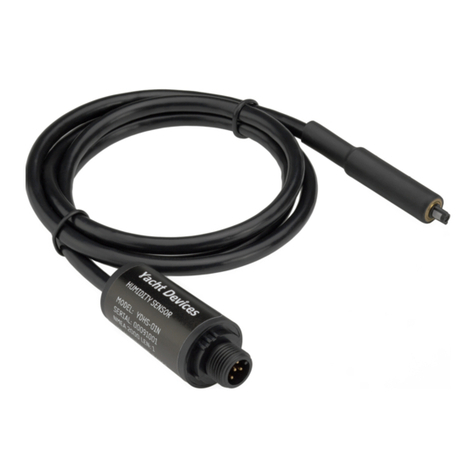
Yacht Devices
Yacht Devices YDHS-01 user manual

Advance acoustic
Advance acoustic EASINESS 2 user manual

Lauda
Lauda Varioshake VS 60 OI operating instructions
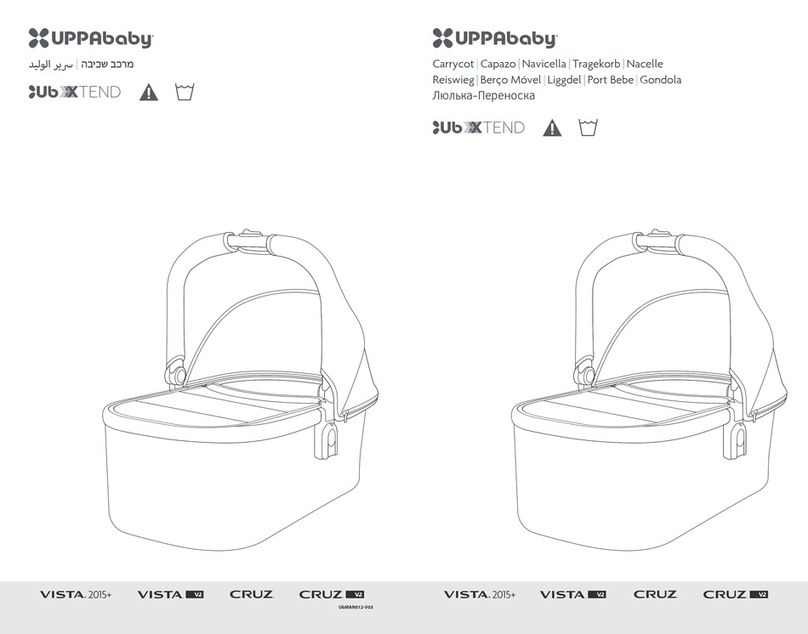
UPPAbaby
UPPAbaby Ub XTEND manual
